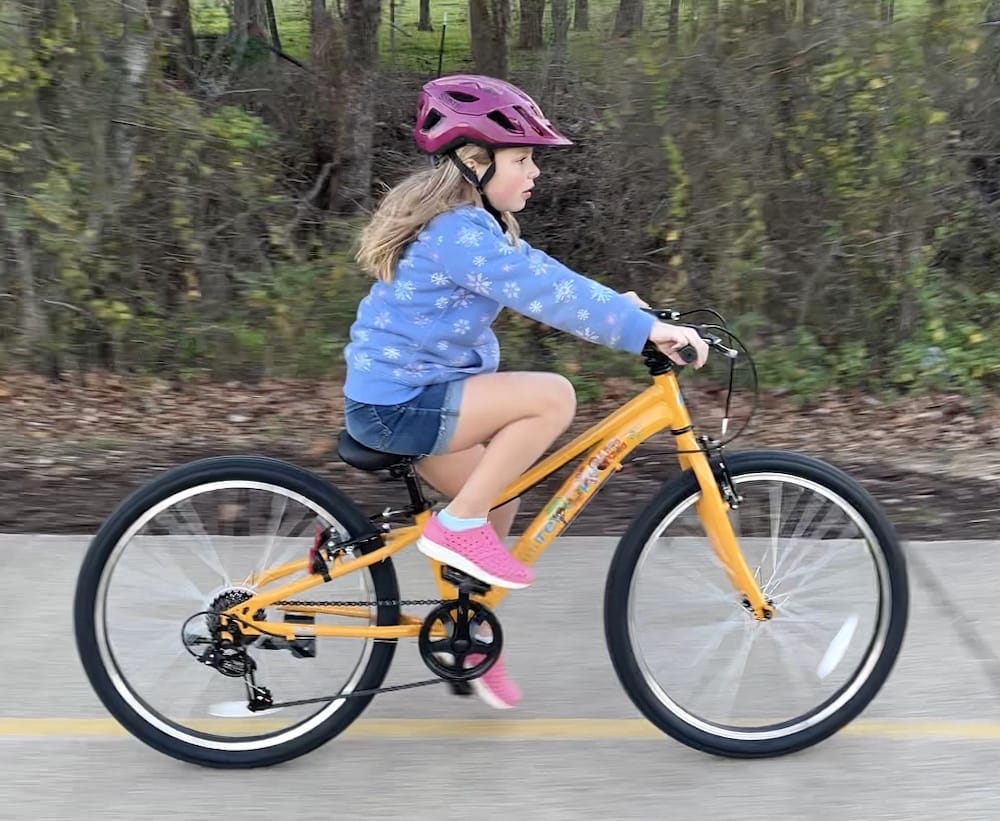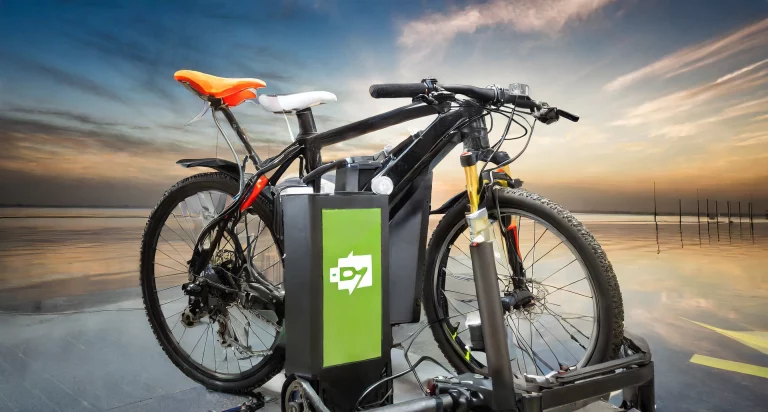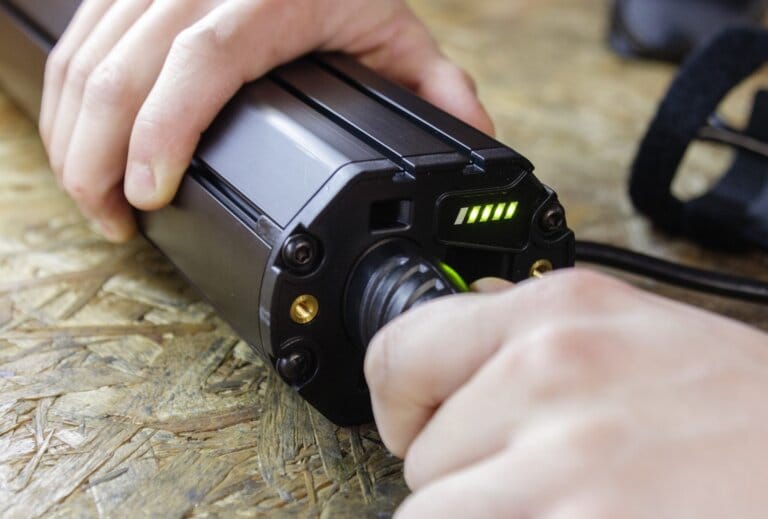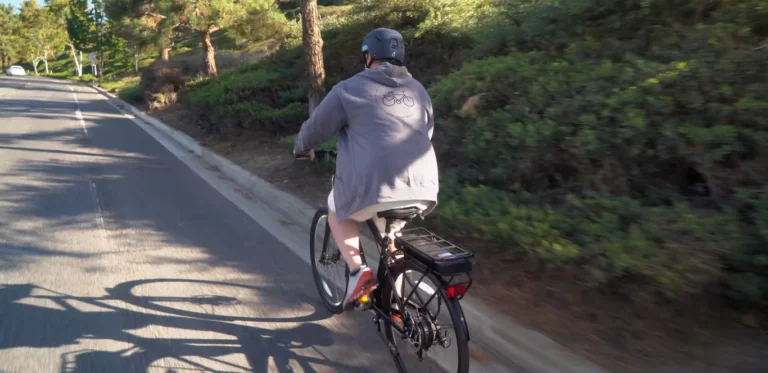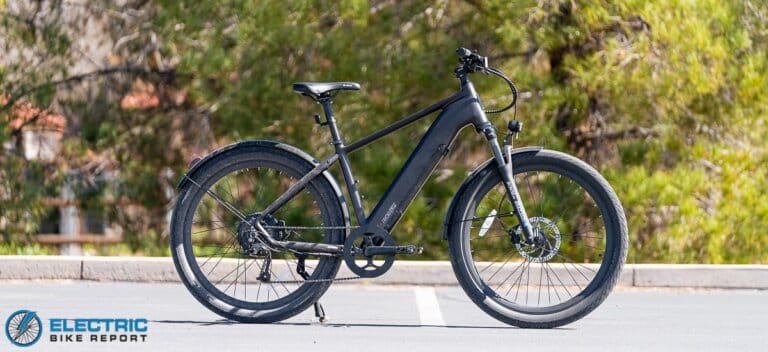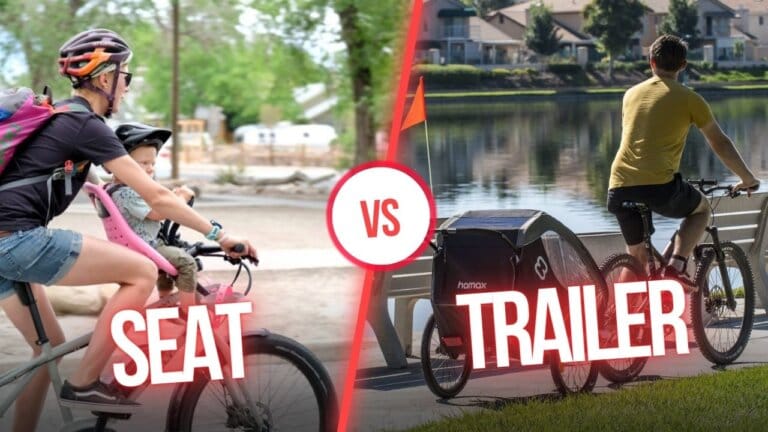Retrospec Dart and Dart Plus Review 2025
The Retrospec Dart and Dart Plus offer great value for kids ages 6 to 11 in the budget to mid-price range. Whether your child is a confident neighborhood cruiser or eager to explore basic dirt trails, the Dart line delivers solid performance at a price that’s hard to beat.
In this review, we’ll break down both the budget-friendly Dart and the more off-road-capable Dart Plus, highlighting what sets them apart from other affordable kids’ bikes—and what trade-offs come with sticking to a lower price point.

Retrospec Dart and Dart Plus
MSRP: $239 / $259 (Dart); $379 / $399 (Dart Plus)
WHEEL SIZES: 20” and 24″
BEST FOR: Confident riders ready for neighborhood adventures (Dart) or basic dirt trails (Dart Plus)
ADDITIONAL SPECIFICATIONS
FRAME: Steel (Dart), Aluminum (Dart Plus)
BRAKES: Dual v-brakes (Dart), Mechanical Disc Brakes (Dart Plus)
GEARS: 7-speed
SHIFTERS: Shimano Tourney grip shift
DERAILLEUR: Shimano Tourney
What We Love About the Retrospec Dart Bikes
- The best quality and design we’ve seen at this price point. If you’re considering a Kent, Schwinn, Huffy, or RoyalBaby, the Dart is a better value.
- Comfortable, semi-upright geometry that confident riders prefer. The Dart Plus geometry is slightly more aggressive for adventurous riders.
- Seven gears help kids climb hills and ride faster through the neighborhood.
- Derailleur guard protects against costly damage from falls.
- Free shipping and available in five fun colorways.
What You Should Know Before You Buy
- While we love these budget-friendly bikes, sizing can impact safety. We don’t recommend using the Dart models at their minimum seat heights—our testers weren’t truly comfortable until the seat was raised at least 1.5″ to 2″ above the listed minimum.
- The Dart Plus has a higher minimum seat height than the Dart. Our testers had no issues riding at the minimum, but the Dart Plus is heavier, making it more suitable for experienced riders.
- You may need to adjust the brake levers for smaller hands—this isn’t covered in the assembly instructions, but we’ll show you how below.
- Assembly is straightforward, but adjusting the drivetrain and brakes requires mechanical know-how. Plan on visiting a bike shop for adjustments if you’re not comfortable doing it yourself.
- These bikes are on the heavier side, as expected for budget geared models.
- The Dart models are Retrospec’s geared neighborhood bikes. For single-speed options, check out the Retrospec Koda line (available in 12″, 16″, and 20″).
Retrospec Dart vs. Dart Plus
Retrospec recently expanded the Dart line with the Dart Plus. While the Dart is aimed at neighborhood riders, the Dart Plus is designed for kids eager to take on basic trails or small jumps.

Equipped for more adventure, the Dart Plus includes:
- Coil-sprung suspension fork
- Aluminum frame
- Mechanical disc brakes with upgraded brake lever
- Upgraded Shimano grip shifter
- Wider 2.3” tires
While both models are available in 20” and 24”, the Dart Plus has higher minimum seat heights and is heavier overall.
| Model | MSRP | Seat Height | Weight |
|---|---|---|---|
| Dart 20 | $239 | 21 – 28” * | 25.9 lb |
| Dart Plus 20 | $379 | 21.75 – 27″ | 27 lb |
| Dart 24 | $259 | 22.5 – 29” * | 28.5 lb |
| Dart Plus 24 | $399 | 26 – 32.5″ | 30.5 lb |
In the first part of this review, we’ll focus on the budget-friendly Retrospec Dart 20 and Dart 24. In the second half (click to jump down), we’ll dive into the more off-road-capable Dart Plus.
Retrospec Dart 20 and 24 Review – Results of our Test Rides

We tested the Dart 20 and 24 with five different riders (ages 4 to 10). From neighborhood rides to school commutes, our goal was to evaluate how easy and comfortable these bikes were—especially given the low price point.
Overall, the Dart is an impressively solid neighborhood bike. It doesn’t feel or look like a “cheap” bike from the big-box aisles. That said, it won’t be right for every family. Here are four key factors to consider:
1. Sizing & Safety – It’s Not Just About Height
The Dart bikes are designed for kids in the mid-to-upper end of their height range. While the published seat height minimums are technically accurate, younger or smaller riders often struggle with brake reach and proper leg extension when pedaling. For safety and comfort, we recommend using the Dart only when your child is at least 1.5″ to 2” taller than what the minimum seat height would suggest. Be sure to check your child’s inseam, not just their height, when deciding.
2. Body Position – Better for Confident Riders
The Dart’s slightly leaned-forward riding position is great for confident kids who like to ride fast and lean into turns. It strikes a nice balance between comfort and control, making it ideal for riders who want to push their limits a bit. The Dart Plus takes this a step further with an even more aggressive geometry, better suited for adventurous riders tackling bumps, jumps, or off-road sections.
In contrast, the Retrospec Koda—which is only available in a 20” size—features a more upright, relaxed riding position that’s better suited for first-time pedalers or kids who feel more comfortable riding tall and steady. If your child is timid or just learning, the Koda may offer a more confidence-inspiring fit.

3. Gears – Helpful for Hills and Speed, But Not Essential for Everyone
With a 7-speed Shimano Tourney drivetrain and a single right-hand grip shifter, the Dart gives kids the flexibility to tackle hills and ride faster with ease. Unlike most budget geared bikes—especially in the 20” and 24” range—that use two shifters (one on each hand), the Dart uses just one, which is a huge advantage. Having only one shifter makes shifting simpler for kids and drastically reduces maintenance.
Interestingly, bikes with only one shifter are often more expensive to manufacture, because they require a higher-quality derailleur and wider-range shifter to cover all the necessary gears on one side. It’s a thoughtful feature that many parents may overlook—but one that makes a big difference in ease of use.

That said, not every child in the 20” wheel range needs gears—especially if they’re mostly riding on flat ground. Younger or less experienced riders may also struggle with the RevoShift grip shifter, which has a large-diameter twist barrel that can be hard to grip and rotate with small hands. It takes effort and often forces kids to release or loosen their grip on the handlebars.
For stronger or more confident riders, the gearing system works well. But if your child doesn’t yet need gears, the single-speed Retrospec Koda Plus 20” is a simpler and lighter alternative that may be a better fit.
4. Tires & Terrain – More Versatile Than It Looks
While the Dart isn’t a mountain bike, its 2.1” wide all-terrain tires offer solid grip and stability on grass, gravel, and dirt. This makes it a great fit for neighborhood explorers who occasionally veer off the sidewalk. If your child is regularly riding off pavement or hitting light trails, though, the Dart Plus—with its 2.3” tires, suspension fork, and disc brakes—offers better control and performance for that kind of riding.

Braking System Setup & Lever Reach: A Mixed Experience
The biggest issue we encountered with the Dart bikes is the braking system—specifically, how much adjustment it required out of the box and how hard the levers were for younger riders to reach. Once fully adjusted, the brakes offered solid stopping power, but getting them dialed in took significantly more work than most bikes we’ve tested.
To be clear, this was our experience with the bikes we received, and your bike may require less adjustment. However, with any budget kids’ bike, it’s important to be prepared to make some mechanical tweaks—especially when it comes to the brakes. That’s part of the trade-off when buying a lower-priced model, and families without bike maintenance experience may need to budget for a professional tune-up.
Brake Setup Challenges
In our testing, the Dart 20 and 24 required more brake tuning than we typically see—especially when compared to higher-end kids’ bikes. This isn’t unusual for budget-friendly models, but it’s worth noting for families who may not have experience with bike maintenance.
On our test bikes, we had to:
- Reposition the brake pads to make proper contact with the rim
- Tighten the brake cables at the anchor points to improve responsiveness
- Fully tighten the brake lever reach screws to bring the levers closer to the grips for smaller hands
While your bike may not require all of these adjustments, some level of fine-tuning is almost always necessary with budget bikes. That’s part of the cost trade-off. If you’re not comfortable making these adjustments yourself, you may want to take the bike to a local shop. Expect to pay around $50 for a basic brake setup.
Hard-to-Reach Brake Levers for Smaller Hands
The Dart 20 and 24 both use the same brake levers—marketed as “easy reach”—but in our testing, we found them to be a poor fit for smaller hands. Even after tightening the reach adjustment screws all the way down, the levers still sat farther from the grips than ideal for many young riders.
Brake Lever Farther from Grip (top) vs. Closer (bottom)

For riders tall enough to comfortably ride the 24″ Dart (with a seat height of 25.5″ or more), brake reach wasn’t an issue. Their hands were large enough to safely and reliably operate the brakes.
However, on the Dart 20, brake reach became a safety concern. Children riding 20” bikes generally have smaller hands, and the levers—while technically adjustable—don’t come close enough for many kids to use comfortably or confidently. Our 43” tall tester could just barely squeeze the levers after full adjustment, and we only allowed her to ride under close supervision with a parent running beside her.
Our 47” tall tester could use the brakes more reliably, but even for her, the lever position wasn’t ideal. It would have been easier if the levers could adjust even closer.
For comparison, the 20” Retrospec Koda Plus has shorter-reach brake levers that are easier for smaller hands to operate. The standard Koda levers are still better than the Dart’s, but the Koda Plus 20” stands out with upgraded metal levers that include tool-free reach adjusters—a rare and helpful feature in this price range.
Optimizing Lever Angle
One last tip: adjusting the angle of the brake levers on the handlebar can also make a big difference. If the levers are too high or low, it can be harder for kids to get a good grip. You can adjust the lever angle by loosening the bolt on the plastic clamp where it attaches to the handlebar and rotating it to a more natural position. Let your child test a few positions to see what feels best.
Retrospec Dart Sizing Recommendations
As a whole, the Dart bikes are best suited for kids in the middle to upper range of their height spectrum for each wheel size. While the published seat height minimums may seem like a good fit for shorter riders, we found that the actual usable sizing starts about 1.5″ to 2″ above those minimums. That’s because fit isn’t just about seat height—it’s also about safe brake reach, comfortable leg extension while pedaling, and a child’s ability to control the bike.
Dart 20 Sizing
The Dart 20 has a listed seat height range of 21.8″ to 28.3″, but based on our testing, we recommend a minimum seat height of around 23”. While our 43″ tall tester below could technically fit the bike with the saddle at its lowest setting, her knee bend at the top of the pedal stroke was excessive, and more importantly, she struggled to safely reach the brake levers—a major concern.

On the other hand, the Dart 20 fit our 47” and 50” riders very well, with good leg extension and safe braking control after lever adjustments.

Even our 53.75″ tester, though close to sizing out, still had a comfortable ride with the saddle at its maximum height. Many bikes are not a great fit when kids are sizing out of them, but the Dart 20 allows for a good amount of growth.

Dart 24 Sizing
The Dart 24 has a listed seat height range of 23.4″ to 29.8″, but we recommend a realistic minimum closer to 25.5″. While the saddle can technically be lowered to 23.4″, that number is far too low for a 24” bike. The Dart 24 simply isn’t proportioned for riders that small. For comparison, even the smallest 24” bikes on the market typically start around 25″.
Our 47” tester was able to touch the ground and pedal with the seat set at the minimum, but the fit was clearly off. Her knees were bent too tightly at the top of the pedal stroke, making it difficult and awkward to push down on the pedals.

On top of that, her reach to the handlebars was overly stretched, resulting in poor posture and limited control. While she technically “fit” the bike, it was not a comfortable or practical setup for real-world riding.
The Dart 24 fit much better for our 50″ tester, especially after we lowered the handlebars by repositioning the headset spacers to be above the stem and rotated the bars slightly back. This made a noticeable difference in comfort and control.

Our 54″ tester also rode the Dart 24 confidently with the saddle set at 28.3″.

Weight
The main drawback of the Dart bikes is their weight. Both the Dart 20 and 24 are noticeably heavier than many comparable models, which is typical for bikes in this price range. For example, the Dart 20 weighs 25.9 lbs., while the Guardian 20, priced at $319, is about 4 pounds lighter.
While the added weight is expected on budget-friendly geared bikes, it’s something to keep in mind—especially for smaller or less experienced riders. Heavier bikes can be harder to start, stop, and maneuver, which may affect your child’s confidence and control. Lighter bikes tend to offer a better ride experience, but they also come with a higher price tag. Whether the weight trade-off is worth it depends on your child’s strength, coordination, and how they’ll be using the bike.
Retrospec Dart Plus Review
For kids eager to explore dirt paths, campground trails, or who simply want the look and feel of a mountain bike, the Retrospec Dart Plus is a great option. Available in both 20” and 24” sizes, the Dart Plus features wider tires, a front suspension fork, and mechanical disc brakes—giving it the look and function of a true recreational trail bike.
We tested the 24” Dart Plus with several riders, all of whom loved the bike. While we haven’t yet tested the 20” version, the Dart Plus lineup is clearly a solid choice for confident riders ready to move beyond the pavement. That said, we wouldn’t recommend the Dart Plus for technical singletrack or kids attempting long, steep climbs. But for basic off-road adventures or light trail use, it’s a capable and affordable ride.
Due to its added weight and more aggressive setup, the Dart Plus is best suited for confident, experienced riders who are comfortable handling a heavier bike. While our trail testing is still ongoing, we’ll continue to update this review as we log more miles with it.
Sizing
The Dart Plus runs slightly larger than the standard Dart, especially in the 24” version. The Dart Plus 24 has a minimum seat height of 26”, compared to 23.4” on the Dart 24. However, our 6-year-old tester was able to ride the Dart Plus comfortably with the saddle at its lowest setting. She also had no trouble with the standard Dart, which she rode with the seat set to 26”—well above its minimum.

Upgraded Features on the Dart Plus
The Dart Plus includes several major upgrades over the standard Dart. In fact, aside from the name and general sizing, the two lines share very little in common.
Frame & Weight
While the Dart has a steel frame, the Dart Plus features an aluminum frame. Despite using a lighter frame material, the 24” Dart Plus is about 1.5 lbs heavier than the Dart—but considering it also includes beefier 2.3” tires, a front suspension fork, and mechanical disc brakes, you’re getting a lot of meaningful upgrades without a significant weight gain.
Drivetrain
The Dart Plus features an upgraded Shimano drivetrain with a narrower-diameter grip shifter, making it easier for smaller hands to use.

The Plus also includes a lower climbing gear (1.1 vs. 2.6 gain ratio on the Dart), which helps offset the added weight of the bike—especially on uphill terrain.
Mechanical Disc Brakes
Equipped with mechanical disc brakes on both the front and rear, the Dart Plus provides reliable stopping power whether cruising the neighborhood or descending light trails.

The metal brake levers are not only more durable than those on the Dart but were also easier for us to adjust during testing.
Front Suspension Fork
To smooth out bumps and rougher terrain, the Dart Plus includes a coil-sprung suspension fork. It performs well for basic trail riding and gives kids a confidence boost when taking on new terrain.

However, to be clear, this is not a high-performance suspension fork. The Dart Plus is not intended for aggressive downhill riding, high-speed descents, or large jumps. The fork is designed for recreational mountain biking, built for casual trail use and neighborhood off-roading.
Retrospec Dart & Dart Plus Bottom Line
If the fit is right, the Retrospec Dart 20 and Dart 24 offer standout value for confident neighborhood riders. With quality components, a single right-hand shifter, and thoughtful design, the Dart outperforms nearly everything you’ll find at big-box stores in this price range. Just be prepared for some brake adjustments out of the box—and keep in mind that the brake levers may be too far for younger or smaller riders to reach comfortably (be sure to read the section on braking above).
For adventurous kids ready to take their riding beyond the sidewalk, the Dart Plus is a solid step up. With wider tires, disc brakes, front suspension, and a more aggressive riding position, it’s built for basic trails and campground paths—not steep climbs or technical singletrack—but it delivers impressive capability for the price.
If your child is on the smaller end of the sizing spectrum or just starting to pedal, consider the 20″ Retrospec Koda Plus, which has shorter-reach brake levers and a more upright fit.
For more options, check out our guides to the Best 20 Inch Kids’ Bikes and Best 24 Inch Kids’ Bikes.

